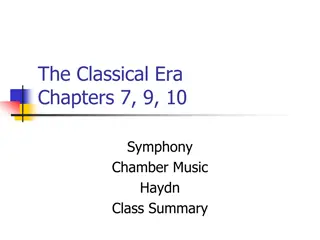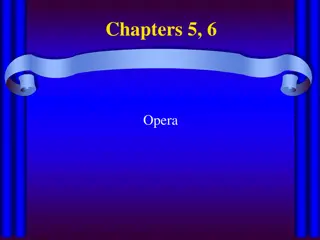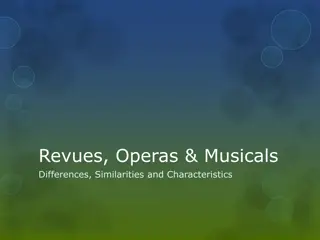Understanding Classical Era Symphony and Chamber Music
In the Classical Era, symphonies emerged as standalone works separate from operas, featuring a typical format of four movements with varying moods and tempos. Chamber music, enjoyed by players and listeners alike, particularly the string quartet, was popular. Haydn, with patronage from the Esterhazy
5 views • 7 slides
Evolution of Opera: From Italian Camerata to Monteverdi and Purcell
Opera originated in late 16th century Italy, influenced by Greek tragedies and quickly gained popularity among aristocracy and general public by the mid-17th century. Baroque culture combined elements of literature, visual art, and music to create opera. The text in opera is vital for storytelling,
1 views • 14 slides
A Comparative Analysis of Revues, Operas, and Musicals
Revues, operas, and musicals each exhibit unique characteristics while sharing elements of song, dance, and entertainment. Revues feature a variety of acts with no central plot, operas emphasize music and singing with distinct types like operettas and grand operas, and musicals blend music, dance, a
0 views • 21 slides
OPERAS: Enhancing Scholarly Communication and Research Services in the European Research Area
OPERAS, a distributed research infrastructure, is dedicated to promoting open science in the Social Sciences and Humanities. The project provides flexible and essential services such as Production, Research for Society, Metrics, and Certification. With core services like Discovery and Publication Se
0 views • 13 slides



